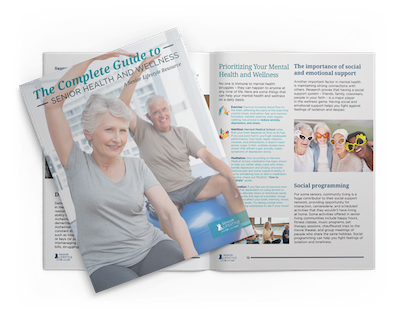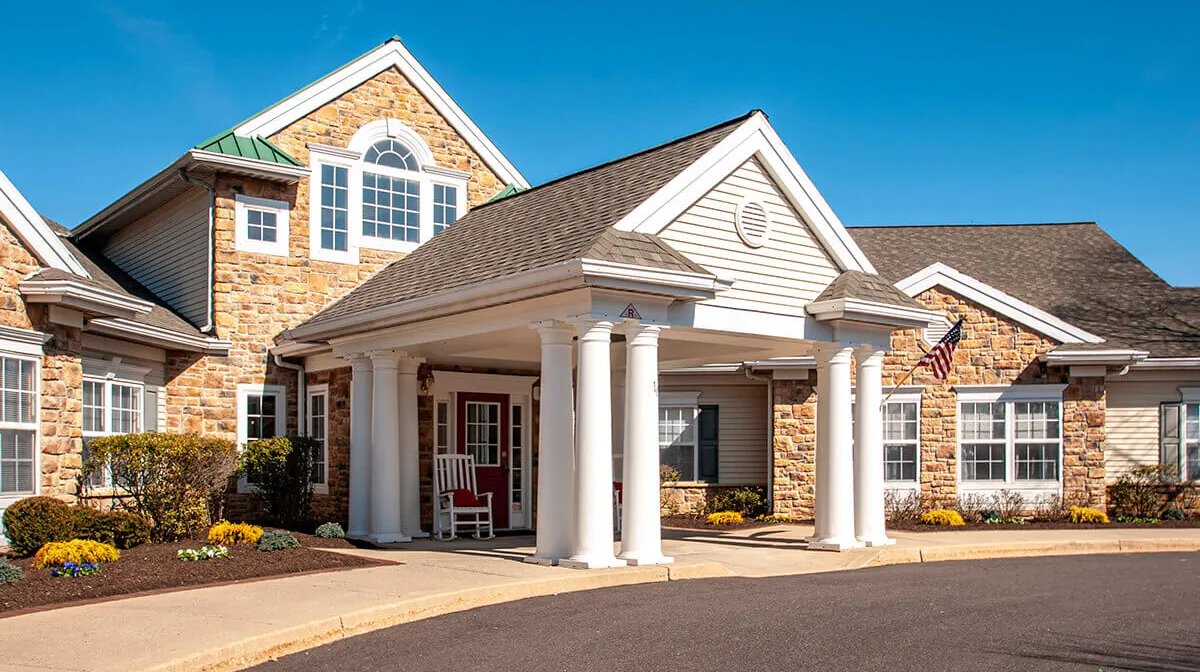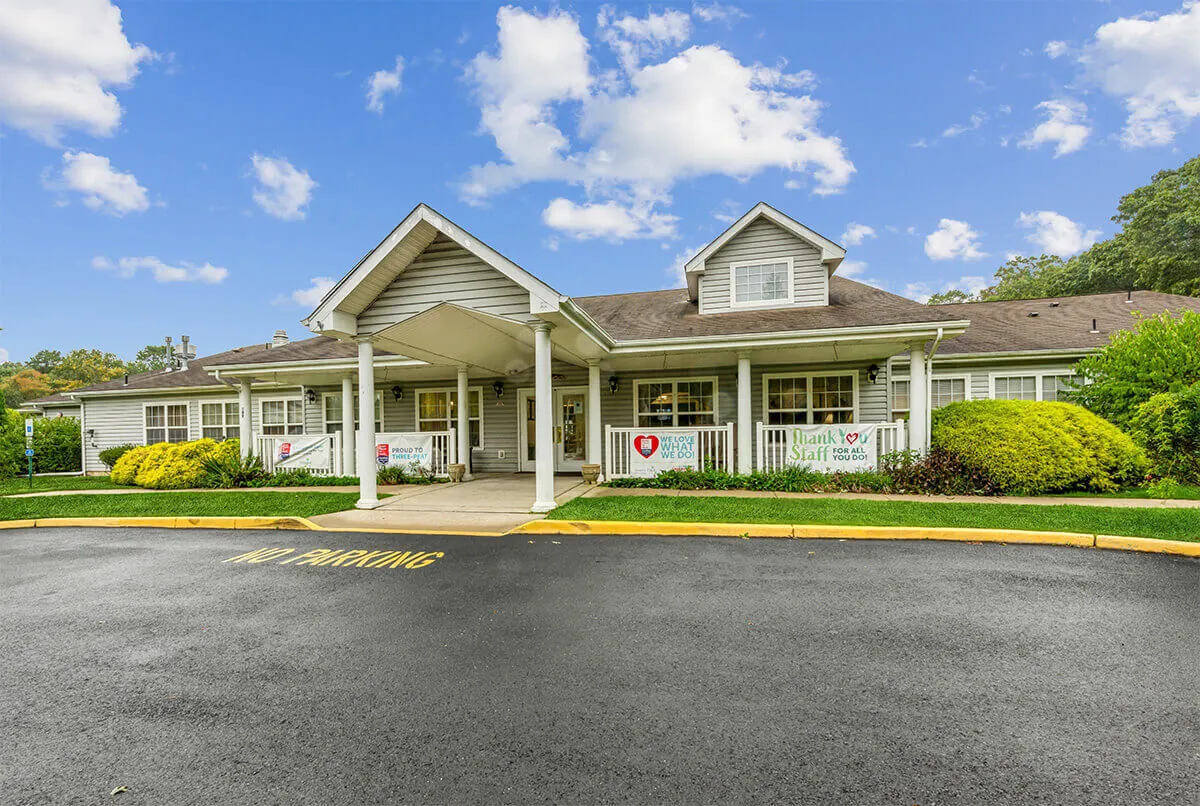Residents of senior communities often face unique challenges that can impact their overall well-being. Maintaining an active lifestyle becomes more important for physical and mental health. One powerful way seniors can contribute to their own... The post 6 Ways...
Residents of senior communities often face unique challenges that can impact their overall well-being. Maintaining an active lifestyle becomes more important for physical and mental health. One powerful way seniors can contribute to their own health is by taking part in group exercise programs.
One study found that seniors were helped physically, mentally and socially by regular group exercise. In this article, we explore the ways group fitness programs can benefit the lives of seniors in community living.
1. Boosting Physical Health�
Tailoring Workouts
Senior living exercise programs are designed with a keen understanding of the unique physical needs and limitations of retirees. Fitness for seniors often involves certified instructors creating tailored workouts to prioritize such areas as improving strength, flexibility, and cardiovascular health. These exercises are carefully selected to enhance mobility, balance, and coordination, helping seniors maintain independence and reduce the risk of falls.
Managing Chronic Disease�
For many seniors, managing chronic health conditions is a part of daily life. Group exercise programs can be adapted to address specific health concerns, such as arthritis, osteoporosis, or cardiovascular issues. Regular participation in these programs has been shown to positively impact conditions like diabetes and hypertension, providing seniors with effective tools for managing their health.
Preventing Functional Decline
As individuals age, the risk of functional decline becomes more pronounced. Group exercises, including strength training and resistance exercises, can help prevent the loss of muscle mass and bone density. These activities contribute to maintaining functional abilities, ensuring that seniors can continue to perform daily tasks with ease and confidence.
2. Benefiting Cognitively
Engaging Senses
Group exercise programs often incorporate activities that engage multiple senses. For example, dance classes may involve coordination with music, stimulating auditory and motor functions simultaneously. This multisensory engagement is beneficial for cognitive health, as it challenges the brain to process and respond.
Learning and Recalling Memory
Certain group exercises, particularly those involving choreography or specific routines, encourage memory recall and learning. Regular mental exercises through group activities contribute to maintaining cognitive function and may even lower the risk of cognitive decline associated with aging.
Using Higher Skills
Group exercise programs often require participants to follow instructions, make quick decisions, and coordinate movements. These activities engage executive functions, which include skills like planning, organizing, and problem-solving. Strengthening executive functions this way can have positive spillover effects, enhancing seniors� ability to manage daily tasks and make informed decisions.
3. Promoting Emotional Well-being
Rewarding Accomplishment
Setting and achieving fitness goals within a group setting provides seniors with a tangible sense of accomplishment. Whether it�s completing a challenging workout or reaching a personal milestone, these achievements contribute to a positive self-perception and boost self-esteem. Such positive reinforcement is essential for maintaining a healthy emotional balance.
Reducing Stress
Participating in group exercise programs serves as a healthy outlet for stress reduction. The rhythmic and repetitive nature of certain exercises, such as walking, yoga, or tai chi, can induce a state of relaxation, reducing overall stress levels. Additionally, the social support within the group creates a nurturing environment that helps seniors cope with daily stressors.
Finding Camaraderie and Support
The social connections formed during group exercise sessions often extend beyond the class itself. Seniors in community living environments share challenges and successes. This sense of camaraderie provides emotional support and creates an environment where individuals feel understood, valued, and emotionally connected.
4. Customizing Programming
Adapting to Physical Limitations
Group exercise programs accommodate a range of physical abilities and limitations. Trained fitness instructors understand the unique challenges faced by seniors, including mobility issues or chronic conditions. As a result, exercises can be modified to ensure safety while still providing a meaningful workout experience.�
At Senior Lifestyle, we promote physical activity, as well as other enrichment activities, as part of an overall fulfilling lifestyle.�
Using Different Methods
To cater to diverse interests and fitness levels, group exercise programs often incorporate a variety of methods. This may include low-impact aerobics, water aerobics, chair exercises, yoga, and strength training. Offering a range of activities ensures that seniors can choose programs that align with their preferences and health requirements, making it more likely for them to maintain consistent participation.
Offering Progression and Challenges
Effective group exercise programs recognize the importance of progression. As seniors build strength and endurance, the programs evolve to provide appropriate challenges. This not only prevents monotony but also ensures that participants continue to experience physical improvements, fostering a sense of achievement and motivation.
5. Employing Motivation and Accountability
Engaging Group Dynamics
The social aspect of group exercise introduces a powerful motivational element. The camaraderie within the group creates a positive atmosphere where seniors are motivated by the shared commitment to health. Exercising alongside peers provides a sense of unity and shared purpose, encouraging individuals to show up for classes regularly.
Establishing a Routine
Structured group exercise programs often follow a regular schedule, which establishes a routine for participants. Having set class times creates a sense of commitment, making it easier for seniors to prioritize their health and attend sessions consistently. This routine fosters a habit of regular physical activity, which is essential for long-term health benefits.
Fostering Accountability�
In a group setting, participants often form informal accountability partnerships. The sense of responsibility towards fellow participants encourages regular attendance and active participation. Knowing that others are counting on them creates a supportive network that enhances motivation and helps seniors stay on track with their fitness goals.
6. Enhancing Quality of Life
Promoting Independence and Functional Abilities
By focusing on strength, balance, and flexibility, group exercise programs directly address aspects that are crucial for daily living. Improving functional abilities enables seniors to navigate their environment with confidence, reducing reliance on assistance for routine tasks.
Enhancing Social Engagement�
The benefits of group exercise extend beyond the actual workout sessions. Social bonds formed during classes often translate into friendships and support networks that enhance daily life. Whether it�s sharing meals, engaging in leisure activities, or offering assistance when needed, the connections made through group exercise contribute to a richer and more fulfilling social life.
Impacting Holistic Health�
The combined effects of physical fitness, social engagement, and mental stimulation achieved through group exercise programs result in a holistic improvement in seniors� overall quality of life. These programs address the multifaceted aspects of well-being, aligning with the World Health Organization�s definition of health as �a state of complete physical, mental and social well-being and not merely the absence of disease or infirmity.�

Download The Complete Guide to Senior Health and Wellness
As people grow older, their health and wellness needs change. Read our eBook, "The Complete Guide to Health & Wellness for Seniors" for everything you need to know about staying healthy and happy as we age.
Download the GuideStay Healthy at a Senior Lifestyle Community�
Group exercise programs help support your health and happiness in a senior community. By participating, you�ll have a more fulfilling experience in your retirement years.
Senior Lifestyle is there for you with specialized health and fitness programs, along with facilities, such as exercise rooms and swimming pools. We�ll take care of the hassles of daily living, such as cooking and cleaning, enabling you to live a healthier, happier life.�
Find out more about Senior Lifestyle or schedule a visit today.
The post 6 Ways Group Exercise Programs Benefit Seniors in Community Living appeared first on Senior Lifestyle.











